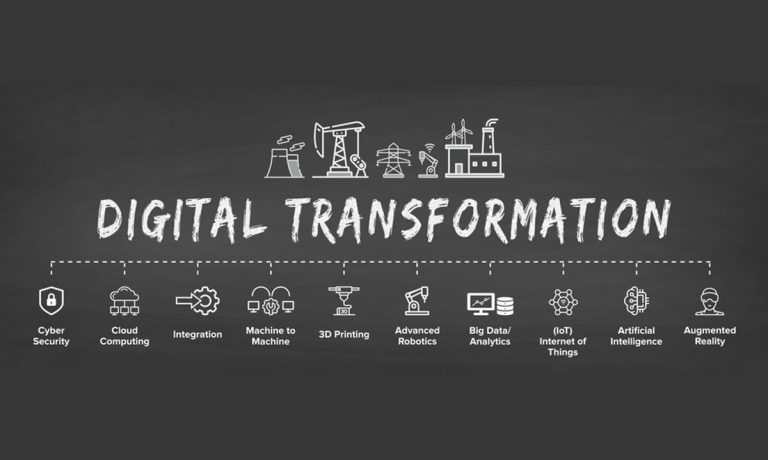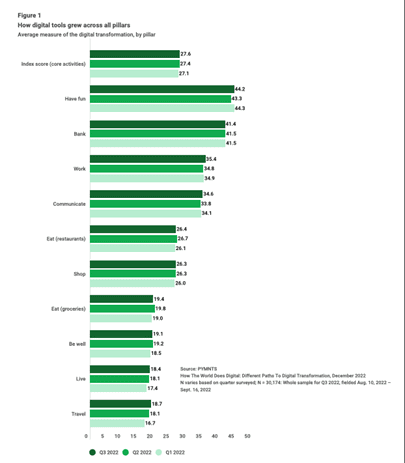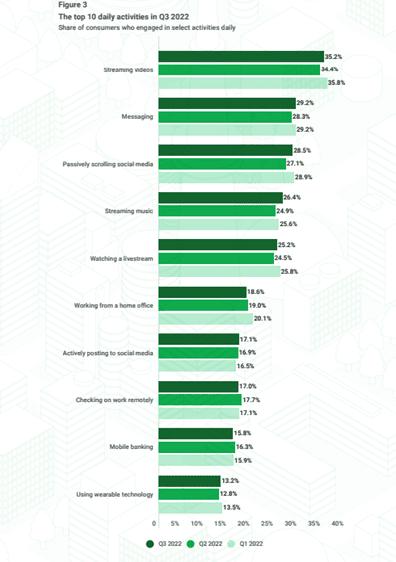
Digital transformation is using digital technologies to fundamentally change how an organization operates and delivers value to its customers. It involves integrating digital technology into all business areas, fundamentally changing how the business works and delivering value to customers.
Digital transformation can take many forms, depending on the specific needs and goals of the organization. For example, a company might use digital technologies to automate and streamline its business processes, improve customer experiences, or develop new products or services. Some common goals of digital transformation include:
Digital transformation can significantly impact an organization, enabling it to stay competitive in a rapidly changing digital landscape. However, it can also be a complex and challenging process, requiring the organization to adopt new technologies, business processes, and ways of working.
Digital transformation is focused on using technology to improve efficiency, increase competitiveness, and create new growth opportunities. It is a strategic process that requires organizations to adapt to new technologies, changing customer needs and expectations, and shifting market conditions.
Digital transformation is taking place in a wide range of industries, including manufacturing, retail, finance, healthcare, and government. It is also relevant to small and medium-sized businesses (SMBs) as well as large corporations.
Some examples of how digital transformation is being applied include:
Measuring Digital Transformation
Analyzing the progression of global digital transformation, PYMNTS collected data from over 30,100 individuals across 11 countries for the report, How The World Does Digital: Different Paths To Digital Transformation.
Among the study findings is that in Q2 2022, digital transformation across all 11 countries climbed 1.2% from Q1 2022 — considerable in one quarter — attributed to rebounds in travel-related activities primarily, but not solely.

Per the study, “On average, each consumer participated in 3.8 distinct digital activities each day, inching up from the 3.7 we observed in Q2 2022. As in previous quarters, video streaming captured more daily users than other digital activities we track, at 35%, followed by messaging at 29%, social media browsing at 29%, and streaming music at 26%, which maintain their position as the top four.”

Additionally, Q3 saw an increased digital transformation in 22 of the 37 activities we measured. “Consumers upped their use of home monitoring systems by 4.2%, with 3.4% more using these tools daily. Their use of home-sharing websites also rose by 4.2%. The other areas with the most notable engagement growth include music streaming, up 4%, traffic-related apps, up 3.3%, and online airfare, up 3.1%.”
Overall, digital transformation involves using digital technologies to fundamentally change how an organization operates and delivers value to its customers. There are several forms of digital transformation, including:
Get the Report: How The World Does Digital: Different Paths To Digital Transformation

What do the movies “Blade Runner,” “2001: A Space Odyssey,” “Back to the Future Part II” and Spike Jonze’s “Her” all have in common?
These science fiction movies, each depicting various versions of a future full of fantastic technologies, all take place in the year 2025 or earlier.
Though some of the high-tech gadgets and futuristic innovations seen in these films, such as hoverboards and flying cars, haven’t quite materialized in everyday life, they have sparked imagination and set the stage for the very real innovations. As the dozens of groundbreaking products and wacky gadgets that debuted at the 2025 Consumer Electronics Show (CES) this week reveal, the future is certainly now.
CES, after all, rarely disappoints when it comes to providing a first-look at some truly strange gadgets that might just represent the ultimate showcase of tomorrow’s technology.
From artificial intelligence (AI) being embedded into everything and smarter than ever home devices, to autonomous robotic companions and wearable tech that both bends and blends reality, many of the inventions that once seemed out of reach in Hollywood films are now being unveiled on the convention floor.
See also: The Five Not-So-Obvious Things That Will Change the Digital Economy in 2025
It’s becoming clear that today’s technological advancements are increasingly bridging the gap between what was once imagined and what’s now becoming real.
For example, smart home robots are no longer a futuristic fantasy — they are being positioned as potentially indispensable components of modern households.
CES 2025 saw the debut of the Roborock Saros Z70, a robot vacuum with a telescopic, five-axis arm. Rosey the Robot from “The Jetsons” has nothing on this little gadget, which its maker describes as “a mechanical arm that sees and thinks,” and is able to pick up and put away items like socks, shoes, tissues and more.
For more serious household tasks, the SwitchBot Multitasking Household Robot K20+ Pro was also unveiled at CES 2025. “Whether it’s delivering objects, vacuuming, monitoring pets, purifying the air, providing home security, or even mobilizing smart tablets, the K20+ Pro juggles household management with ease … from delivering food and drinks to carrying small packages,” said a company release.
Read more: Training Robots Using Video Games Could Democratize Warehouse Automation
The K20+ Pro’s core is designed for customization and flexibility, serving as a modular foundation that allows users to create, adapt, and personalize the robot for a wide variety of innovative applications, and can connect with third-party smart devices like Alexa, Google Assistant and Siri, ensuring integration into any smart home ecosystem.
Elsewhere, TCL premiered its “AI Me” (Amy) concept companion robot, complete with animated eyes, autonomous movement and an AI-powered camera on its head; while Dreame showcased its X50 Ultra robot vacuum that has legs to avoid obstacles.
As smart home technology continues to evolve, the integration of robots designed to assist in daily activities could significantly alter how we interact with our homes, manage tasks and even shape the future of work.
TomBot, for example, debuted an emotional robotic lap dog, Jennie, an AI robot therapy dog designed to keep seniors company. On the more playful side of things, Tokyo robotics startup Yukai Engineering introduced the Nékojita FuFu, a portable cat-shaped robot that can blow air to cool hot food or drinks.
It wasn’t solely robotics for use at home being showcased at CES. John Deere used the Las Vegas event to reveal its own autonomous agricultural products. The fully autonomous machines were on display from Jan. 7 to 10, and were a bit bigger in size, if equivalently less cute, than the TomBot puppies.
Read more: Google Reportedly Bringing Gemini AI to TV Sets
Behind the strangely futuristic convenience of a robot picking up your laundry and taking out the trash while it vacuums and interfaces with the rest of your household appliances lies a much larger story: the rise of the smart economy.
As CES 2025 showed, augmented reality (AR) glasses are the eye candy of the smart economy. A host of futuristic specs were unveiled, capable of a range of tasks that turn the wearer into a high-tech superhero.
Halliday showcased “the world’s first proactive AI glasses with invisible display,” while freshly debuted Loomos.AI glasses offer a ChatGPT-4o integrated AI assistant.
But other appendages remain up for grabs, and innovative products from smart rings to apps like WowMouse, which allows smartwatch wearers to control devices using just their gestures and fingers, are vying for market share in ways that aim to make daily life more convenient, efficient and secure.